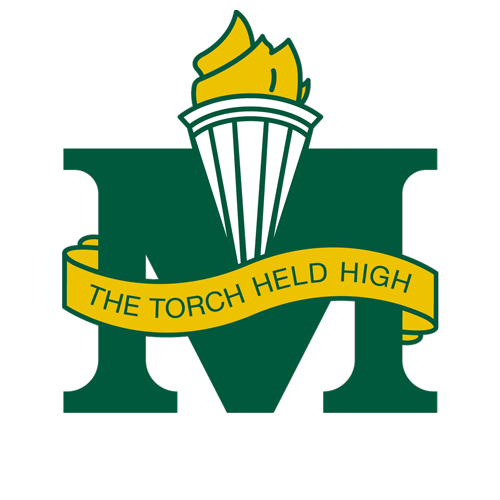AP 784: Medical - Allergies and Anaphylaxis
Health & Safety
Background
The Superintendent demonstrates the belief that staff, students, parents and community members need to be respectfully aware that individuals within our school community are susceptible to environmental conditions and/or allergens.
Whereas the key responsibility lies with the anaphylactic individual and respective family to learn to avoid specific triggers, in the case of an anaphylactic student, the school community shall also be aware of the student’s needs and assist the student as necessary. The approach is to regularly educate the community, solicit the cooperation of families and set in place procedures that are designed to create a safe and caring environment for all students and staff.
Parents may ask that specific allergens (i.e., peanuts or peanut products) be banned from the school as part of a prevention plan, however, such a request cannot be reliably implemented. It would be impractical to state that any school is an allergen-free school as the school staff cannot control, with 100% certainty, the allergens that come into the school or when a sensitivity to an allergen would affect a member of the community. Education and awareness, therefore, exist together as the preferable approach to maintaining safe learning environments for all.
Note: Situations may arise in which the duty to accommodate a student in instances of anaphylaxis or allergy conflicts with the necessity for a Service Dog. Notwithstanding the articles in the procedure, Administrative Procedure 244 – Service Dogs identifies additional procedures to respond to such conflict.
Definitions
a) Anaphylaxis: shall refer to a severe systemic allergic reaction which can be fatal, resulting in circulatory collapse or shock, and “anaphylactic” has a corresponding meaning.
b) Anaphylaxis Emergency Response Plan: shall refer to the school-based response plan as legislated in the Protection of Students with Life-Threatening Allergies Act, section 3. An Anaphylaxis Emergency Plan exists as a subset of a student’s Individual Care Plan.
c) Individual Care Plan: shall refer to the specific plan in place to mitigate concerns regarding a student’s differentiated requirements for care.
Procedures
Ensuring the safety of students in a school setting depends on the cooperation of the entire school community. To minimize risk of exposure, and to ensure rapid response to an emergency, parents, students and school personnel must understand and fulfill their responsibilities.
With respect to the Principal and Staff:
1. The Principal, site supervisor or designate shall ensure proper school procedures are in place and in alignment with the Protection of Students with Life-Threatening Allergies Act.
2. The Principal shall ensure that a student’s Individual Care Plan is maintained and followed in order to reduce the risk of exposure to anaphylactic causative agents;
3. The Principal shall ensure the proper dissemination of information on life-threatening allergies to parents, students and staff;
4. The Principal shall ensure regular training for all employees to deal appropriately with life-threatening allergies; and
5. The Principal shall ensure effective processes are in place for responding to emergency situations associated with life threatening conditions:
5.1 Students who may experience anaphylaxis with respect to allergies will require an Anaphylaxis Emergency Response Plan.
With respect to the Anaphylaxis Emergency Plan
6. An Anaphylaxis Emergency Response Plan shall be completed as part of the student’s Individual Care Plan in accordance with Administrative Procedure 780: Medical – Individual Care Plan.
7. The Principal shall ensure that an Anaphylaxis Emergency Plan is maintained which shall include information about each student who has the potential for an anaphylactic response to an allergy; including
7.1 The type of each student’s allergy;
7.2 Methods to monitor each student’s allergy;
7.3 Strategies in place for each student to avoid allergic causative agents;
7.4 Treatment plans for each student should an allergic or anaphylactic reaction take place; and
7.5 Emergency contact information.
8. The Principal or designate, through registration procedures and in consultation with parents, shall attempt to identify those students who are subject to medical reactions that may be life threatening and who, therefore, may require specific care or intervention.
8.1 Parents are responsible for informing the Principal if their child is known to have a life threatening or serious allergy; and
8.2 Parents are also responsible for ensuring that each year, the school receives a copy of the Request for Assistance to Administer Medication Form.
9. Preventative measures shall be taken at schools to minimize the risk of allergen exposure of an anaphylactic individual, without depriving the individual of normal peer interactions.
With respect to Communication and Information Dissemination
10. The Principal shall ensure that all staff members have reviewed all students’ Individual Care Plans and accompanying Anaphylaxis Emergency Response Plans;
11. The Principal shall ensure that all staff members (including teachers, substitute teachers and support staff) are aware of the identity of all students with serious, or life-threatening allergies, who are attending the school.
12. The Principal or designate may request that the parent, guardian or independent student provide additional documentation from a medical doctor necessary to determine appropriate accommodation as prudent to do so.
13. The Division is a partner in the No Child Without® program, thus Medic Alert bracelets are available (at no cost) to students with serious and/or life-threatening allergies.
13.1 In order to facilitate awareness, students with serious or life-threatening allergies are expected to wear a medical alert identification.
With respect to Training
14. The Principal shall ensure annual training and/or review for all regular staff members (including both teaching and support staff) and others who may be in a position of responsibility for students with serious or life-threatening allergies;
14.1 Training shall consider the provision for detailed instruction, by medically qualified personnel, for staff members who may be required to assist students with interventions/procedures such as injections with epinephrine auto injectors or inhalers.
15. School staff are encouraged to review the most current edition of Anaphylaxis in Schools and Other Settings: available through https://foodallergycanada.ca
16. School staff shall ensure that students receive age-appropriate training; including:
16.1 Understanding allergies and anaphylaxis and the importance of anaphylactic students eating only those foods brought from home unless otherwise authorized by the parent in writing;
16.2 Being made aware of the importance of hand-washing prior to eating;
16.3 Learning to recognize symptoms of severe allergic reaction;
16.4 Understanding the methods to inform a teacher or adult as soon as signs of medical distress occur or when the known, accidental ingestion or exposure to an allergen occurs for a student; and
16.5 When age appropriate, understand how to use an epinephrine auto-injector.
With respect to Medications and/or Epinephrine
17. The Principal shall ensure that a minimum of one epinephrine auto-injector is maintained in each school and in an accessible location that is well-known to all staff.
17.1 During any field trips, outdoor activities, or physical education sessions, such emergency medication shall be on hand. (i.e. with the student or in the office); and
17.2 Duplicate units are to be provided for by the parents to ensure multiple access points to medication exist as prudent to do so.
18. The Principal or designate shall record the date medication is brought in, ensure that the required authorization and indemnification and release forms are on file, and record the amount of medication provided by the parent/guardian.
19. Epinephrine auto injectors and inhalers can remain in the possession of the student, unless the student is not yet mature enough to discharge that responsibility. This decision must be the result of a discussion (with appropriate consent and information) involving the Principal, the parent(s), and the student.
20. Notwithstanding section 18, all medications to be administered by the school shall be brought to school by a parent/guardian, except in situations in which the physician determines it is in the best interest of the student that the student carry the medication on her/his person.
21. It is the responsibility of the parent to notify the school of any changes to the original prescription and to provide a new pharmacy label and container, or a note of authorization from the physician regarding the change.
22. Medication is to be received by the Principal or designate only in the original pharmaceutical containers, or otherwise as authorized in writing by a physician.
23. When a medication reaches its expiry date, parents will be responsible for replacing the medication as may be medically necessary.
With respect to Emergency Response
24. In emergency situations, a staff member may be required to administer epinephrine auto injectors or inhalers.
24.1 The standard of care in all such instances is to be that of a careful and prudent parent.
25. Employees may be preauthorized to administer or supervise student administration of medication as per Section 6 of the Protection of Students with Life-Threatening Allergies Act.
26. Even if not preauthorized, an employee may administer an epinephrine auto-injector or other medication prescribed to a student for the treatment of an anaphylactic reaction if the employee has reason to believe that the student is experiencing an anaphylactic reaction.
26.1 As per the Emergency Medical Aid Act, employees are protected from liability with respect to section 21 unless it is established that the act or omission was caused by gross negligence on the part of that person.
Potential Conflict with Service Dogs:
27. The Principal shall refer to the process in Administrative Procedure 244 – Service Dogs to establish an Accommodation Council.
27.1 As per Administrative Procedure 244(18) a determination for an alternate placement may be necessary for either the Service Dog Applicant or any other person at the school based on a variety of factors, including but not limited to:
27.1.1 The severity and extent of information provided for in relevant medical documentation;
27.1.2 The ability to accommodate, including any transportation-related issues; and/or
27.1.3 The quantity of individuals impacted by the conflict.
28. Teacher transfers that may result from the application of this procedure proceed in accordance with section 212 of the Education Act and all applicable Division policies or procedures.























